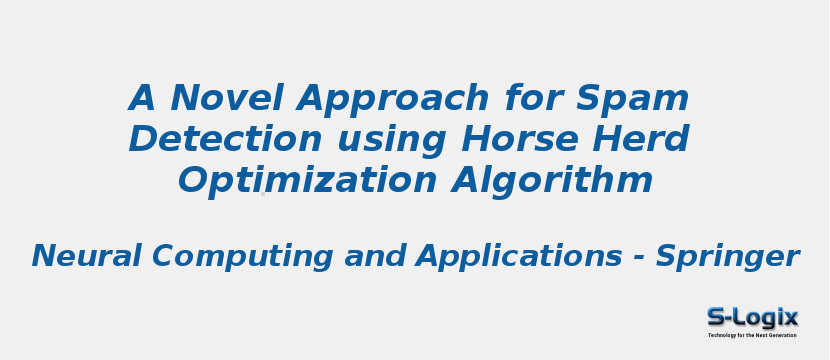Research Area: Metaheuristic Computing
Communication via email has expanded dramatically in recent decades due to its cost-effectiveness, convenience, speed, and utility for a variety of contexts, including social, scientific, cultural, political, authentication, and advertising applications. Spam is an email sent to a large number of individuals or organizations without the recipients desire or request. It is increasingly becoming a harmful part of email traffic and can negatively affect the usability of email systems. Such emails consume network bandwidth as well as storage space, causing email systems to slow down, wasting time and effort scanning and eliminating enormous amounts of useless information. Spam is also used for distributing offensive and harmful content on the Internet. The objective of the current study was to develop a new method for email spam detection with high accuracy and a low error rate. There are several methods to recognize, detect, filter, categorize, and delete spam emails, and almost the majority of the proposed methods have some extent of error rate. None of the spam detection techniques, despite the optimizations performed, have been effective alone. A step in text mining and message classification is feature selection, and one of the best approaches for feature selection is the use of metaheuristic algorithms. This article introduces a new method for detecting spam using the Horse herd metaheuristic Optimization Algorithm (HOA). First, the continuous HOA was transformed into a discrete algorithm. The inputs of the resulting algorithm then became opposition-based and then converted to multiobjective. Finally, it was used for spam detection, which is a discrete and multiobjective problem. The evaluation results indicate that the proposed method performs better compared to other methods such as K-nearest neighbours-grey wolf optimisation, K-nearest neighbours, multilayer perceptron, support vector machine, and Naive Bayesian. The results show that the new multiobjective opposition-based binary horse herd optimizer, running on the UCI data set, has been more successful in the average selection size and classification accuracy compared with other standard metaheuristic methods. According to the findings, the proposed algorithm is substantially more accurate in detecting spam emails in the data set in comparison with other similar algorithms, and it shows lower computational complexity.
Keywords:
Communication
cost-effectiveness
convenience
speed
social
scientific
cultural
political
authentication
advertising applications
storage space
email system
multiobjective
computational complexity
Author(s) Name: Ali Hosseinalipour & Reza Ghanbarzadeh
Journal name: Neural Computing and Applications
Conferrence name:
Publisher name: Springer
DOI: 10.1007/s00521-022-07148-x
Volume Information: 34, pages 13091–13105
